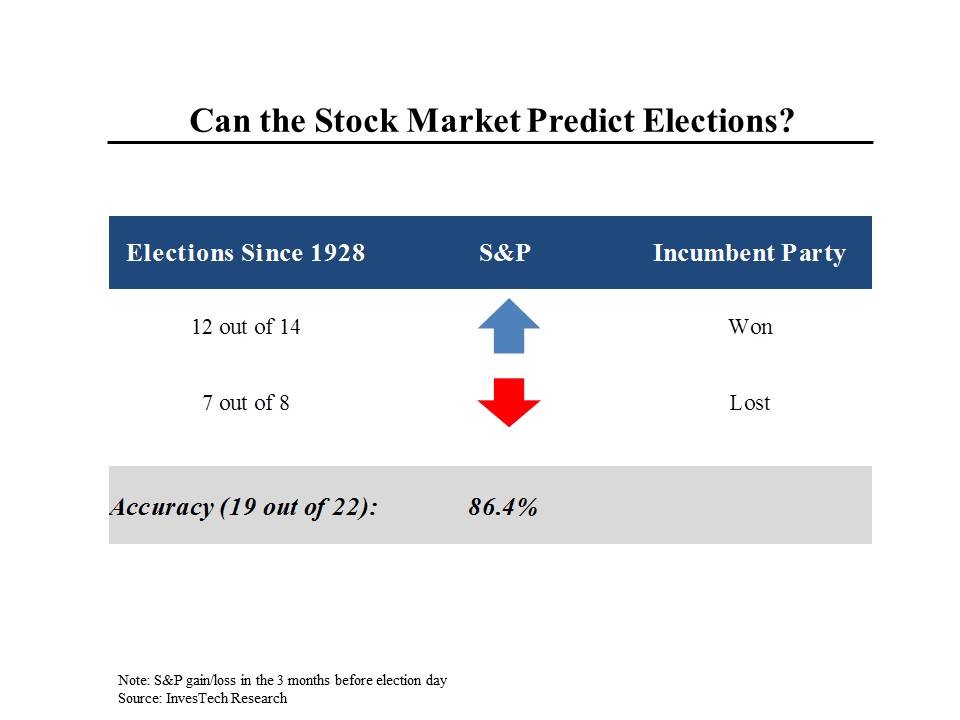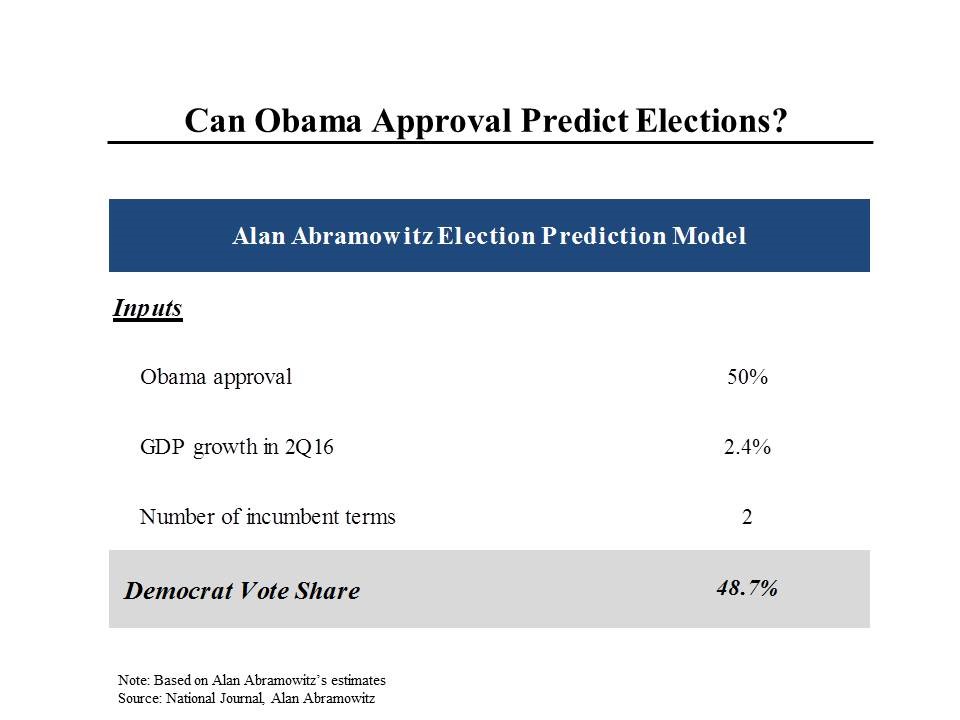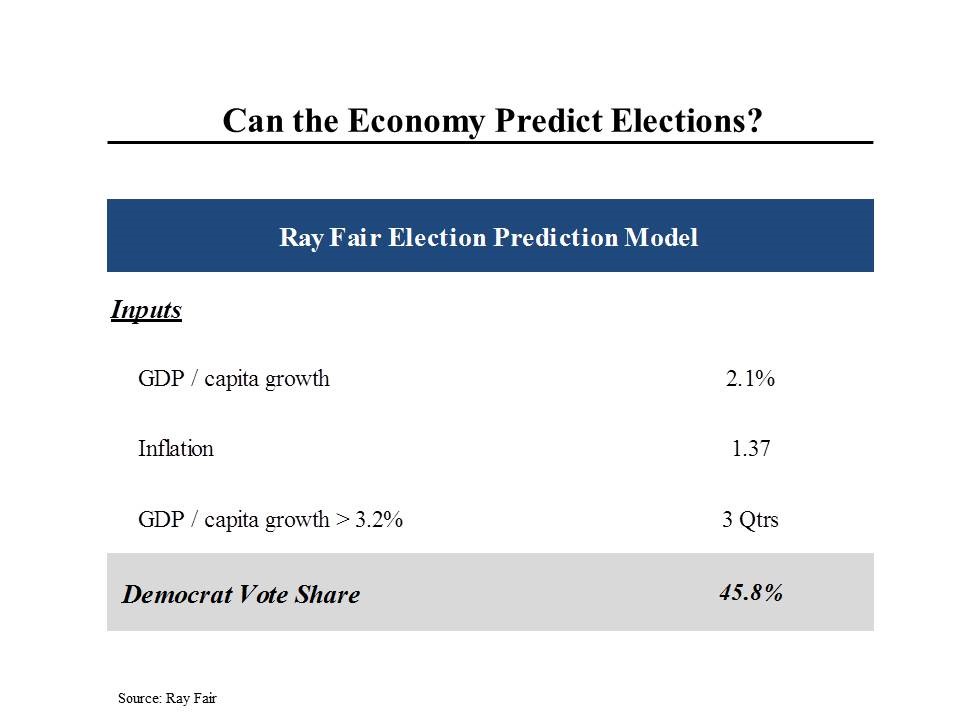Economists are often as obsessed as pollsters and pols with analyzing the political tealeaves in the throes of major elections.
That’s especially true in 2016 when the economy once again could determine whether the Democrats maintain their hold on the White House or if Donald Trump, Ted Cruz or some other Republican will be the next president.
Related: How Trump Could ‘Run the Table’ if He Beats Cruz in Iowa
With the stock market in a major swoon, an economic slowdown sowing fears of a renewed recession and evidence that the deficit is on the rise again, the Democratic nominee – whether it’s former Secretary of State Hillary Rodham Clinton or Sen. Bernie Sanders of Vermont -- will find it challenging to convince voters they should succeed President Obama.
While pollsters are having a hard enough time projecting winners in the Iowa caucuses and New Hampshire primary next month – let alone which party will prevail in the November general election – economists and financial whizzes are fearlessly turning to well-tested models to predict the winner.
And right now, their findings are not good news for Democrats.
The latest economic wise man to step up to the plate is Steven Rattner, a New York financier and former Obama administration adviser on the auto industry who offers regular economic commentary and analysis on MSNBC’s Morning Joe program.
Related: Trump, Cruz clash over values and eligibility in tense Republican debate
There are three ways of looking at the election Rattner explained on Friday, beginning with the ebbs and flows of the stock market, then, turning to economic growth and inflation, and finally gauging the impact of the incumbent president’s approval rating in the run-up to the election. “Many economists believe that the state of financial markets, the economy and other quantitative metrics can be used to successfully predict the outcome of presidential elections,” Rattner explained.

And at this point, none of these indices point favorably to a Democratic election this fall. On the contrary, if current trends persist, Rattner says, we may see “a blood bath for the Democratic side.”
Related: What the Liberal Attacks on Bernie Sanders Are Really About
The following charts illustrate what three predictive models might foretell about the outcome of the November presidential election:
Rattner says the stock market has been a first-rate gauge in picking presidents in the past. Indeed, looking back over the past 22 presidential elections beginning with 1928, the change in the stock market over the three months before Election Day determined the outcome 86 percent of the time.
This trend generally has been favorable to the party in power, Rattner explains, since the stock market on average goes up more often than in goes down. However, this rule of thumb failed notably three times, in 1956, 1968 and 1980, when the Democrats were in power. Factors like the unpopularity of the Vietnam War, inflation and the Iranian hostage crisis likely heavily influenced the outcome of the 1968 and 1980 contests, when Republicans Richard Nixon beat Hubert Humphrey and Ronald Reagan defeated President Jimmy Carter.
Related: Bill Clinton Still Can’t Fess Up to One of His Biggest Blunders
“Of course, we won’t know what this indicator will be predicting until shortly before Election Day,” Rattner says.

Using economics models as a forecaster is another way to predict presidential winners. Yale professor Ray Fair developed the Fair model, which focuses exclusively on Gross Domestic Product growth per capita and the inflation rate to predict what share of the popular vote the Democrats and Republicans are likely to pick up.
“Because this recovery has been so sluggish, even though inflation has also been low, almost any realistic assumptions about how the economy might perform between now and Election Day leads to a Republican victory,” Rattner asserts.
To be more precise, the model – using consensus estimates of how well the economy will perform this year—suggests that the Democrats will pick up no more than 46 percent of the vote. That would mean a landslide victory for the GOP.
Related: Why a Trump-Sanders Race Is Suddenly a Real Possibility
As for the accuracy of this technique, Rattner says the model has only been wrong three times dating back to 1916. However, Democrats can take heart: One of the few times the model was dead wrong occurred in 2012, when it projected Obama would get only 49 percent of the vote against Republican Mitt Romney but wound up receiving 51.3 percent.
There’s a third approach, developed at Emory University by Professor Alan Abramowitz. His recipe is one part the incumbent president’s approval rating and one part GDP. The recipe is mixed with how many terms the current president has served -- that metric is weighted against any two-term president’s party winning again. “By this methodology, the Democratic candidate can expect to receive 48.7 percent of the vote,” Rattner says, meaning a Democratic bloodbath at the polls.
However, there is an important caveat here: If Trump or Cruz -- who have very high negatives among voters -- wins the Republican nomination, “Obama’s approval rating could rise as voters start to make a comparative evaluation of the alternatives,” Rattner says.






